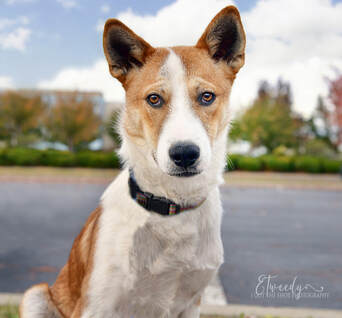
You know the ones that almost look like...well no, they look like...um, their ears remind you of...wait, that snout is definitely a...
Yep. I've met them, too.
When I was growing up, these dogs were called Mutts. They are still called Mutts today, but some people take offense over that moniker, and prefer to call them "mixed breeds."
Mutts are some of the best companions on the planet. There are many reasons why, but here's THREE.
1. Mutts Are Healthier
My grandfather would call the result of the pairing of two dogs from different breeds, a Mongrel. Purebred dogs stem from very controlled pairings of the same breed. However, Mutts looking up their family on Ancestry dot com, could find at least two or more different breeds in their lineage. Because of this single fact, Mutts are less predisposed to genetic disorders that are breed specific.
Example: When we had pet Golden Retrievers, our vet noted that the breed was prone to developing cancers, specifically lymphoma and hemangiosarcoma. We did, in fact, lose one of our Goldens to hemangiosarcoma at the age of 8, despite careful screening and yearly vet visits.
While disorders are still found in Mutts, they are not found at the rate they are diagnosed in purebred dogs. Mutts also tend to live longer lives than purebred dogs. The Canine Journal notes: "mutts who have at least two breeds and commonly more, tend to have the least health problems and live longer than their purebred counterparts."
Because of these factors, insuring a mixed=breed dog is often cheaper.
To check on some other breed-specific ailments, CLICK HERE.
2. Mutts Are Unique
Because a Mutt's background can be hard to trace, this questionable ancestry adds to their one-of-a-kind characteristics.
I love photographing Mutts. Every one of them that I meet is so very unique. Their one-of-a-kindness is endearing.
Everyone that meets her, comments on her unique coat and overall appearance.
She is also an award-winning model, as her photographs have merited in competition, and received a number of blue ribbons.
Her beauty is directly related to the fact that she is of mixed breeding, and has retained many of the most appealing characteristics of her ancestors.
A few statistics.
Over half of the domesticated dogs-owned-by-people population are mixed breeds. Some came from accidental breedings of dogs that belonged to friends, neighbors or family members, but most were adopted from shelters.
So Mutts are readily available and are as near as your local shelter.
That is, in fact, where our Billie came from. She was a stray, and she was pregnant when the shelter took her in. Billie had six puppies at the shelter that looked VERY DIFFERENT than she did. She hasn't spilled the beans about the father.
Below is a collage I did, at the time we adopted Billie, of her puppies. We know the owners of two of her pups, but do not know who adopted the others. Billie was found wandering with her sister, Molly.
Aberdeen University researchers conducted intelligence tests on 100 dogs, both mutts and purebreds. The scientist used seven intelligence and psychology tests that included complex mazes, spatial awareness, and problem solving.
After the dogs performed the tasks, the results were compared. They concluded that, overall, mixed breed dogs are smarter than most purebred dogs.
We have been happy Mutt parents over the course of our dog-raising lives, and I can highly recommend checking out your local shelter to find your next loyal companion.
Click Into the Circle
I am part of a weekly blogging group of professional pet photographers located all over the planet. To see what others have blogged about in this week's topic, start here with Jessica Wasik of Bark & Gold Photography, taking you on a dog photography session at Sewickley Heights Borough Park with senior Border Collie/Saint Bernard Cody.
Then find the link at the end of each blog to click on to the next photographer.
Enjoy your weekend!



 RSS Feed
RSS Feed